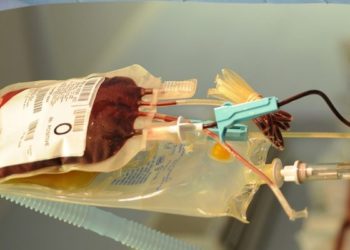Intravenous iron associated with increased infection risk compared to oral or no iron
1. This systematic review and meta-analysis demonstrated that intravenous iron was associated with an increased risk of infection compared to oral or no iron.
2. Intravenous iron resulted in higher hemoglobin increases and reduced red blood transfusion risk, yet no change in mortality or length of hospital stay compared to oral or no iron.
Evidence Rating Level: 1 (Excellent)
Study Rundown: Intravenous (IV) iron is recommended to treat anemia associated with chronic conditions, such as chronic kidney disease, inflammatory bowel disease, and heart failure. IV iron increases circulating non-transferrin-bound iron, which can promote pathogen growth and predispose patients to infection. Although IV iron has been shown to treat anemia effectively and reduce transfusion requirements, the risk of infection is unclear. This systematic review and meta-analysis examined the safety and effectiveness of IV iron compared with oral iron or no iron. The primary outcome was the risk of infection. A total of 162 studies with 40 066 participants were included (154 randomized clinical trials and 8 non-randomized studies) from 1966 to January 31, 2021. IV iron was associated with a higher risk of infection compared to oral or no iron (relative risk [RR]: 1.17 [95% CI: 1.04-1.31]; I2= 37%; p= 0.03), which equates to 17 additional infections for every 1000 patients (95% CI: 4-31) who receive IV iron. Among secondary outcomes, IV iron was associated with increase in hemoglobin (mean difference [MD]: 5.7g/L [95%: 0.50-0.64]; I2= 94%; p<0.001) and a reduction in the risk of requiring red blood cell transfusions (RR: 0.93 [95% CI: 0.76-0.89]; I2= 15%; p<0.001) compared to oral iron or no iron. Importantly, there was no significant difference in long-term mortality (RR: 0.94 [95% CI: 0.75-1.18]; I2= 0%; p= 0.63) or length of hospital stay (MD: -0.43 days [95% CI: -1.10 to 0.24]; I2= 50%; p= 0.05) with IV iron compared to oral or no iron. Overall, IV iron was associated with increased infection risk, although it was more effective in improving hemoglobin levels and reducing transfusions. This was a large, strong meta-analysis of many randomized, controlled trials with strict methodological criteria. Notably, however, there were variations in infection reporting and criteria between the included studies. It is critical to consider the benefits (hemoglobin and transfusions) and risks (infection) when deciding between iron treatments for anemic patients.
Click to read the study in JAMA Network Open
Click to read an accompanying editorial in JAMA Network Open
Image: PD
©2021 2 Minute Medicine, Inc. All rights reserved. No works may be reproduced without expressed written consent from 2 Minute Medicine, Inc. Inquire about licensing here. No article should be construed as medical advice and is not intended as such by the authors or by 2 Minute Medicine, Inc.







